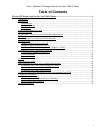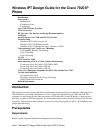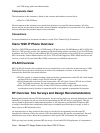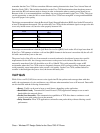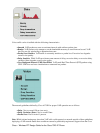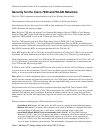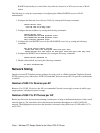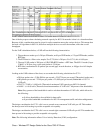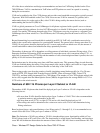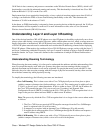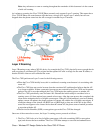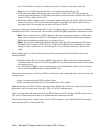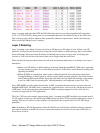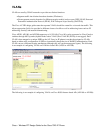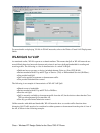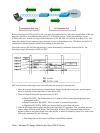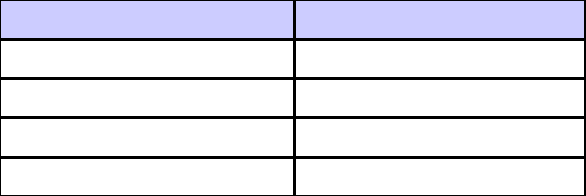
remember that the Cisco 7920 has somewhat different roaming characteristics than Cisco Aironet Network
Interface Cards (NICs). This includes thresholds on the Cisco 7920 that determine when the phone roams or
how much the RF environment needs to change in order to determine when a roaming event should occur.
Because of this, it is recommended that a secondary site survey be performed for the Cisco 7920s. This gives
you the opportunity to tune the APs to ensure that the Cisco 7920s have enough RF coverage and bandwidth
to provide proper voice quality.
The design recommendation is that the Received Signal Strength Indication (RSSI) level in the RF network is
at least 20 throughout the network. This provides the Cisco 7920 with the minimum signal coverage to be able
to not only initiate a new call, but also roam properly between APs.
RSSI
dBm
15
−85
30
−70
45
−50
60
−35
The design recommendation is that the QoS Basis Service Set (QBSS) level on the APs is kept lower than 40.
If the Cisco 7920 attempts to initiate a call and the QBSS element in the beacon is more than 40, the call will
fail with a network busy tone to the user.
The power levels of the APs vary from network to network and need to be adjusted to meet site−specific
requirements. On the APs, the coverage area increases as the power levels increase. But this does not
necessarily mean that all the APs should be set to 50 or 100mW. This could potentially create an RF
environment where the Cisco 7920s roam too frequently because of RF coverage overlap. Frequent roams
could potentially cause interruptions in the overall voice quality. On the Cisco 7920, another tradeoff to
consider is that the higher the power−level, the shorter the battery life.
VoIP QoS
While Voice over IP (VoIP) does convert voice signals into IP data packets and converge them with data
traffic, the requirements of voice and data are very different when transmitted over an IP network. Data traffic
can be classified with the following characteristics:
Bursty Traffic can be sent in large or small bursts, depending on the application.•
Bandwidth Greedy Transmission Control Protocol (TCP) applications attempt to use as much
bandwidth as the network allows.
•
Packet Loss Insensitive The retransmission capabilities of TCP allow data to continue to work
correctly even with packet loss on the network.
•
Delay Insensitive Most TCP applications can handle some packet delay without effecting overall
performance.
•
Cisco − Wireless IPT Design Guide for the Cisco 7920 IP Phone



